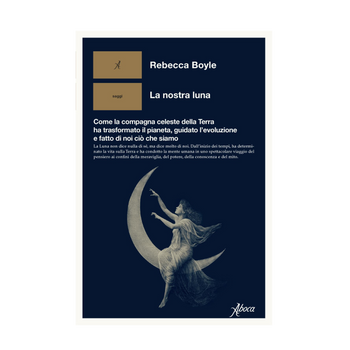Un prezioso cofanetto con il fascino dell'antico Oriente, dai colori solari, esaltati dall'applicazione dell'oro a caldo.
Aboca Edizioni presenta una selezione di tavole dal Kitâb al-Diryâq, splendido manoscritto vergato nel 1199 da Muhammad ibn Abi al-Fath e conservato nella Biblioteca Nazionale di Parigi. L'opera è dedicata alla teriaca, un antico composto medicinale inizialmente usato come cura per i morsi di serpente e in seguito impiegato come panacea. Scelte tra le settantadue raffinate pagine che compongono il manoscritto, le quindici tavole contenute nella cartella ritraggono, attraverso sapienti miniature e volute dorate, le piante medicinali più diffuse ed utilizzate nel mondo arabo del XII secolo.
Dalla nota di Oleg Grabar: «La varietà dei tipi di personaggi, la gamma di abiti che indossano o delle attività nelle quali sono occupati, i molti animali (in particolare cavalli), le piante, gli oggetti e i frammenti architettonici trovati in queste pagine sono veramente straordinari e senza equivalenti nel XII secolo. […] Come fu possibile tutto questo negli anni di declino del XII secolo in qualche parte del mondo di lingua araba che si estendeva dall'Egitto all'Iran? Allo stato delle conoscenze attuali, non vi furono tentativi di tale arte antecedenti al Kitâb al-Diryâq del 1199».
Il rigoroso commentario, dovuto ad arabisti di fama mondiale, ricostruisce la tradizione testuale del manoscritto, esamina il suo contenuto, ne illustra la portata storica, il corredo iconografico e i motivi decorativi.
I facsimili ad uso professionale di Aboca: opere fondamentali a disposizione di tutti. Leggendarie edizioni e splendidi manoscritti, selezionati nelle biblioteche di tutto il mondo, sono stati riprodotti attraverso tecniche di stampa d'avanguardia e corredati da ampi e puntuali apparati critici.
Note
Presentazione di Valentino Mercati.
Contributi di Jaclynne Kerner, Marie Geneviève Guesdon, Oleg Grabar, Françoise Micheau, Anne Caiozzo.
Altre informazioni
Il manoscritto del Kitâb al-Diryâq è entrato nella Biblioteca Nazionale di Parigi nel maggio del 1879, con la segnatura Supplemento arabo 2433, dopo essere stato acquistato da un medico parigino, il Dr. Letorneau, per la somma di mille franchi. Il volume era precedentemente appartenuto a un farmacista, Jean Françoise Bonastre, che l'aveva acquistato il 7 novembre 1832. Il modo in cui arrivò in Occidente è sconosciuto, tuttavia è probabile che ciò sia avvenuto nel XVIII secolo o all'inizio del XIX secolo. In Oriente, il volume sembra essere circolato soprattutto in Iran, come dimostrano le trascrizioni aggiunte dai possessori e le note in persiano dell'ultima pagina. Le ultime quattro righe dell'ultima pagina sono occupate da un colophon dove l'amanuense, dopo aver indicato la fine del testo, ha aggiunto al suo nome la data di fine stesura, corrispondente al gennaio 1199.
An exquisite chest with a flavour of the ancient orient, with colours of the sun, enhanced with an application of hot foil gold lettering.
Aboca Edizioni presents a selection of plates from the Kitâb al-Diryâq, a splendid manuscript handwritten in 1199 by Muhammad ibn Abi al-Fath and conserved at the Biblioteca Nazionale, Paris. The work is dedicated to theriac, an ancient medicinal compound initially used to treat snakebites and then used as a panacea. Choose between the 72 elegant pages that make up the manuscript, the 15 plates contained on the pages illustrate, via clever miniatures and golden spirals, the most common and widely used medicinal plants in the Arab world in the XII century.
From the comment by Oleg Grabar: "The variety of types of character, the range of clothes they wear or the activities they are doing, the many animals (horses in particular), the plants, the items and the architectural fragments found in these pages are truly extraordinary and without equal in the XII century. [...] How was all of this possible during the declining years of the XII century in a part of the Arab speaking world that extended from Egypt to Iran? According to current knowledge, there were no attempts at such art prior to the Kitâb al-Diryâq in 1199".
The in-depth commentary, from world-renowned experts of Arabic history, reconstructs the text tradition of the manuscript, examines its content, illustrates its historical bearing, iconographic content and decorative motifs.
Aboca facsimiles for professional use: fundamental works available to all. Legendary additions and splendid manuscripts, selected from the libraries throughout the world, have been reproduced using avant-garde printing techniques, complete with thorough and concise critiques.
Notes
Introduction by Valentino Mercati.
Contributions by Jaclynne Kerner, Marie Geneviève Guesdon, Oleg Grabar, Françoise Micheau, Anne Caiozzo.
Other information
The manuscript of the Kitâb al-Diryâq came to the Biblioteca Nazionale, Paris in May 1879, under Arab supplement number 2433, after having been purchased by a Parisian doctor, Dr Letorneau, for the amount of Fr.1000. The volume previously belonged to a pharmacist, Jean Françoise Bonastre, who had acquired it on 7 November 1832. The method by which it arrived in the west is unknown, however it is likely that it happened in the XVIII century or at the beginning of the XIX century. In the east, the volume seems to have circulated especially in Iran, as illustrated by the transcriptions added by those who held it and the notes in Persian on the final page. The last four lines on the final page take the form of an afterword where the scribe, after having indicated the end of the text, added the drafting end date to his name, January 1199.



















